
Nurse Training
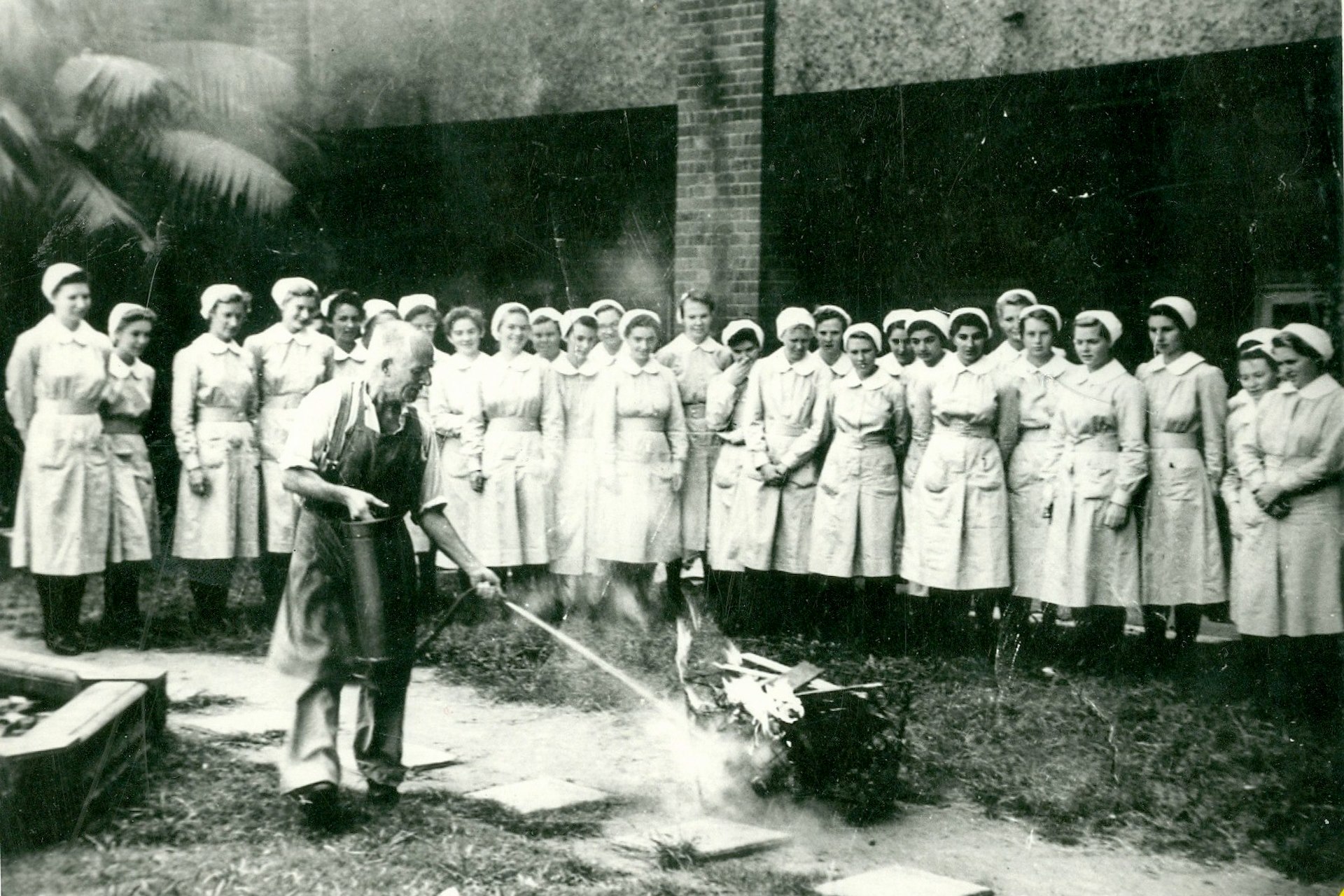
Before a formal nurse training school was established at RPA, nurses received lectures and practical instruction in wards and theatres from RPA physicians and surgeons as well as the Matron, Assistant Matron and Ward Sister. Training began as a two-year course, progressing to three years in 1888, and four from 1899-1963. Trainee nurses were not allowed to marry.
A course of 40 lectures was delivered in Anatomy and Physiology, Elementary Nursing, Surgical Nursing, Medical Nursing, Nursing in Ophthalmic cases, Nursing of Sick Children, Hygiene and Self-Care, Materia Medica, Nursing the Insane, Delirious and Nervous Patients, Nursing Gynaecological cases, Application of Electricity, Massage, and Invalid Cookery.
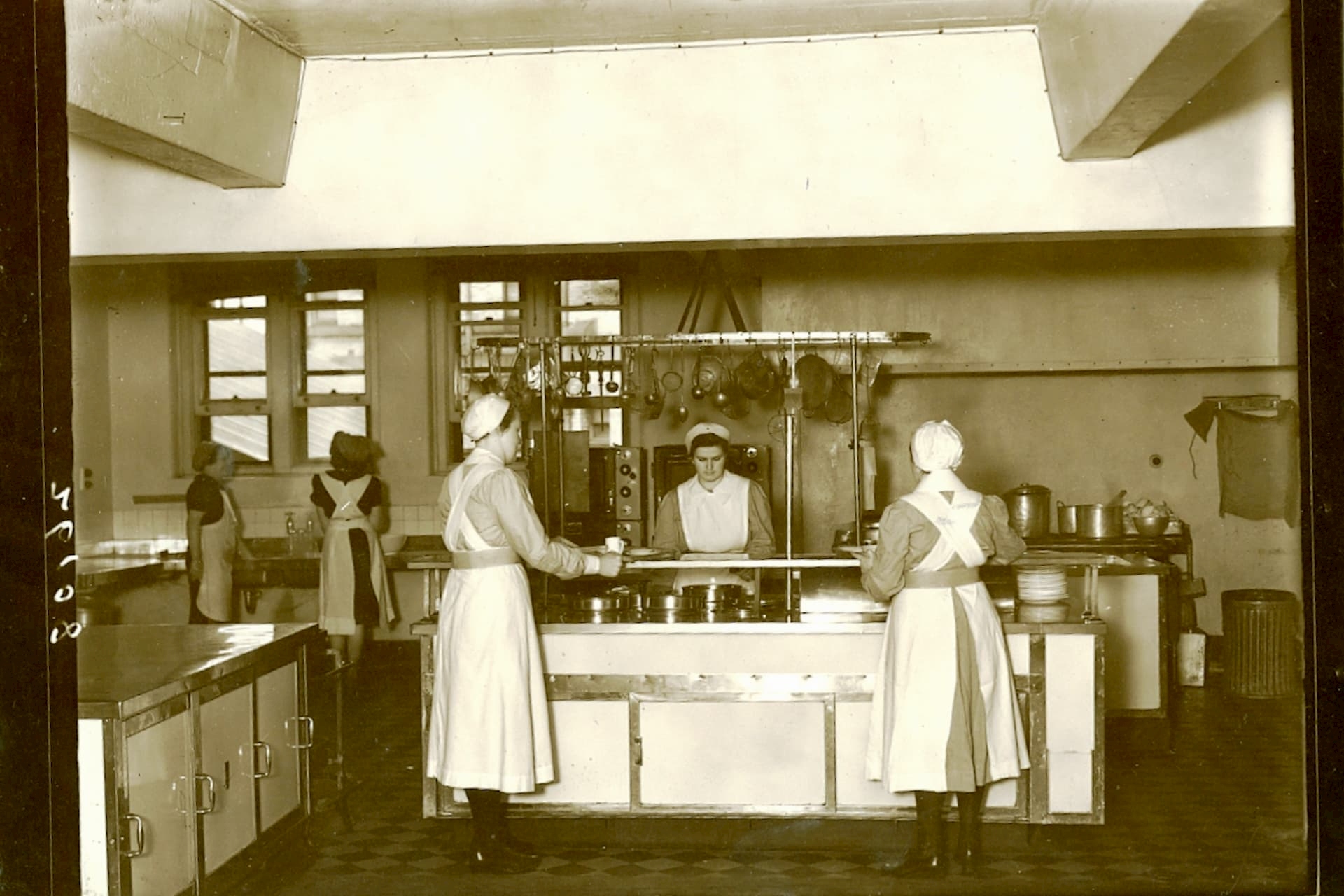
By the fourth year of training nurses undertook cleaning in the operating theatres. Each theatre had a staff of one sister and two nurses. Nurses had to wash walls, lights and floor with lysol, scrub enamelware with monkey soap or sandsoap, clean the copper sterilisers with oxalic acid and shine with monkey soap and brasso for inspection by the sister. Cleaning after surgery took about four hours. Three autoclaves had to be filled and re-filled, hundreds of pairs of gloves sterilised, and large amounts of linen sorted.
In the 1930s trainee nurses performed long hours of hard physical work and were examined by the Medical Superintendent to make sure they were fit. Many contracted tuberculosis during training.
The Preliminary Training School was established for nursing trainees in 1936 with Sister Muriel Doherty appointed Director. It opened on Tin Pot Alley (later Johns Hopkins Drive) as part of extensions to the Nurses' Home and was situated in the basement. It comprised a classroom, sluice room with mops, brooms, bedpans, a dayroom (ward kitchen), and a ward with hospital beds. Nurses trained for 6-8 weeks.
From 1936 to 1984, over 300 groups of trainees entered the Preliminary Training School, later renamed the "Pre-Clinical Block". The Museum holds a register of nurses trained at RPA from 1882 to 1962: it contains over 8000 entries!
Procedures in practical nursing were taught including patient sponging and methods of hospital bed making. 'Barbara Ann' or 'Mrs Bedford', a model purchased in London by Sister Doherty, was a doll with inbuilt catheter used for teaching. She now resides in the RPA Museum. One trainee remembered,
'Preliminary Training School is supposed to prepare you for working in the wards but we were to discover that there is a vast difference between carrying out a procedure on a dummy than on a human being. Learning to give bed pans and to posture and sponge a dummy in bed was a hoot but when faced with doing the same thing to a human being it wasn't exactly a laugh a minute – especially if you used too much soap and the patient was very hairy or the hot water runs lukewarm on a cold morning'.
Bandaging was supervised and practiced, as one nurse vividly remembered of the early 1940s,
'I recall that bandaging took up a lot of time and was the closest we came to learning an art form. We strove for perfect figure of eight spirals and above all that glorious head bandage with its even 'V' for victory symbols climbing from the brow to the crown and descending evenly to the nape of the neck. Bandaging led to other joys also, as two probationers had to stay behind each day to wash the bandages'.
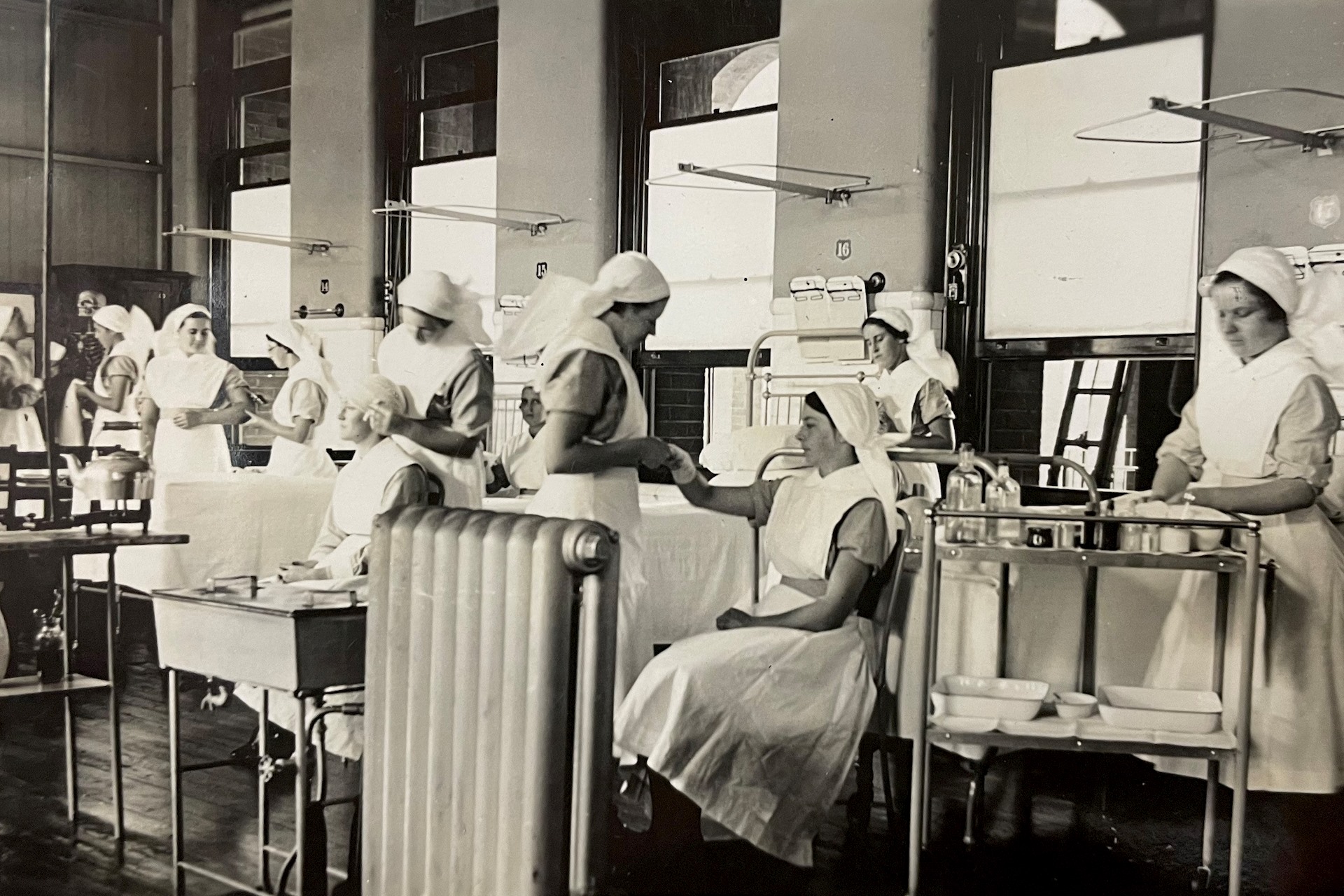
Tutor Sisters gave lectures in Anatomy and Physiology, and after a few weeks in Preliminary Training School, the nurses spent an afternoon in a ward. Written examinations and an examination of practical procedures were given at the end of the school program. Student nurses were then sent to a ward. One nurse of the 1940s reflected,
There were lectures to be attended on off duty time, but these were, it seemed to me of secondary value when compared with ward learning, especially those we had to attend at 9am after being on night duty all night as happened all too frequently.
By the 1940s, Nurses Registration Board guidelines stated nurses were to receive lectures on Anatomy and Physiology in first year, Surgical Nursing and Medical Nursing in second year, and Hygiene and Infection and Invalid Cookery in third year.
Second year nurses' duties included preparing patients for surgery, learning different skin preparation methods, giving an aperient the night before an operation and on the morning of surgery an enema. Sterile dressings of surgical wounds were undertaken with nurses required to set up a dressing trolley, scrubbing up between dressings, and cleaning and resetting trolleys afterwards.
Third year nurses became Senior Nurses responsible for difficult surgical dressings which included those with the removal of sutures, those with packing, and the shortening of drainage tubes. They also gave injections and medications and did rounds with junior resident doctors, as well as assisting doctors with abdominal paracentesis, lumbar puncture, and cannulation for abdominal and chest drainage. During evening duty they were occasionally put in charge of a ward.
Fourth year nurses had greater responsibility and were left in charge on weekends to relieve the Sister if there was no Junior Sister, went on rounds with senior doctors, and supervised the discipline and practical teaching of junior nurses. They had a term of Senior Night Duty, in charge of a Gloucester House floor, or one of the major medical or surgical wards. They were also required to write reports on all patients.
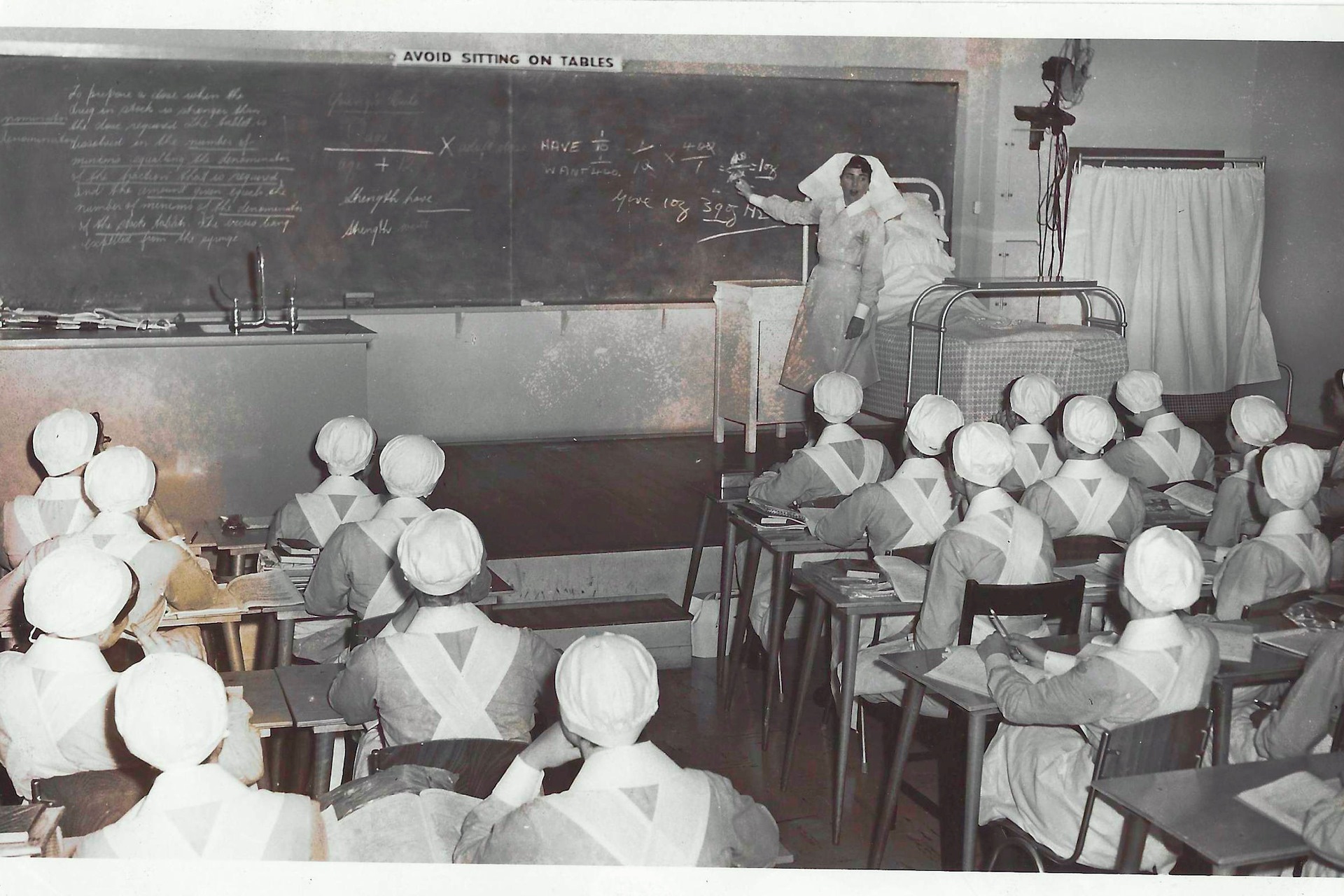
In April 1948 – a Fund for a Nursing Educational Centre opened at RPA. Changes included:
- Charge Sisters renamed as Junior Sisters, with four initially placed on separate wards to give clinical bedside instruction to nurses
- Case assignment implemented where a junior and senior nurse worked together to provide total care to seven patients
- Roster system of three eight-hour shifts in each 24-hour period implemented in some wards in response to increased budget costs due to working hours reduced from 44 to 40 hours per week for the entire staff and a new award for lay and nursing staff
- A study day for Ward Sisters with topical discussions
The NSW College of Nursing opened in 1949 and began offering Diplomas in Nursing Education, Nursing Administration (1949-73), and a certificate in Occupational Health Nursing (1950-73). RPA nurses were proactive in improving their education through these courses. Those with better means travelled to London and Europe for postgraduate nursing training. Some scholarships were available but were mainly for Matrons and Administrators. Before this the only additional nursing certificates offered were in Obstetrics (Midwifery), Mothercraft and Psychiatry.
The first formal graduation ceremony occurred in March 1950 in the Nurses' Ballroom of the second Nurses' Home. It was hoped that a formal ceremony would improve the image of nurses. Also, in 1950 a Certificate in Operating Theatre Management was introduced.
Following WWII, nursing staff numbers were greatly increased. By 1951 there were 900 nurses employed at RPA, up from 400 in 1940.
The advances of the post-war era demanded a more detailed knowledge of nursing from nurses and therefore more skilled teachers and teaching methods. There was an urgent need for Tutor Sisters. In 1954 there were only three Tutors for 600 nurses. The Matron encouraged interested registered nurses to enrol in the one-year NSW College of Nursing course with board and housing provided in the Nurses' Home at a minimal rate.
Alterations in nurse training and teaching methods were also necessary to encourage more women to enter the profession. Undesirable living conditions, poor pay, strict discipline, unpaid overtime, rigid duty rosters, and work injuries led nurses to leave the profession and discouraged others from joining. In the early 1950s, formality still existed in the Preliminary Training School training environment,
First names were never permitted in the class room or wards. At all times were had to address one another formally, Nurse Dunn, Nurse Wilson or Nurse Jillett.
Another nurse remembered,
'Several times I felt like throwing in the towel and have my mother to thank for her comfort and support'.
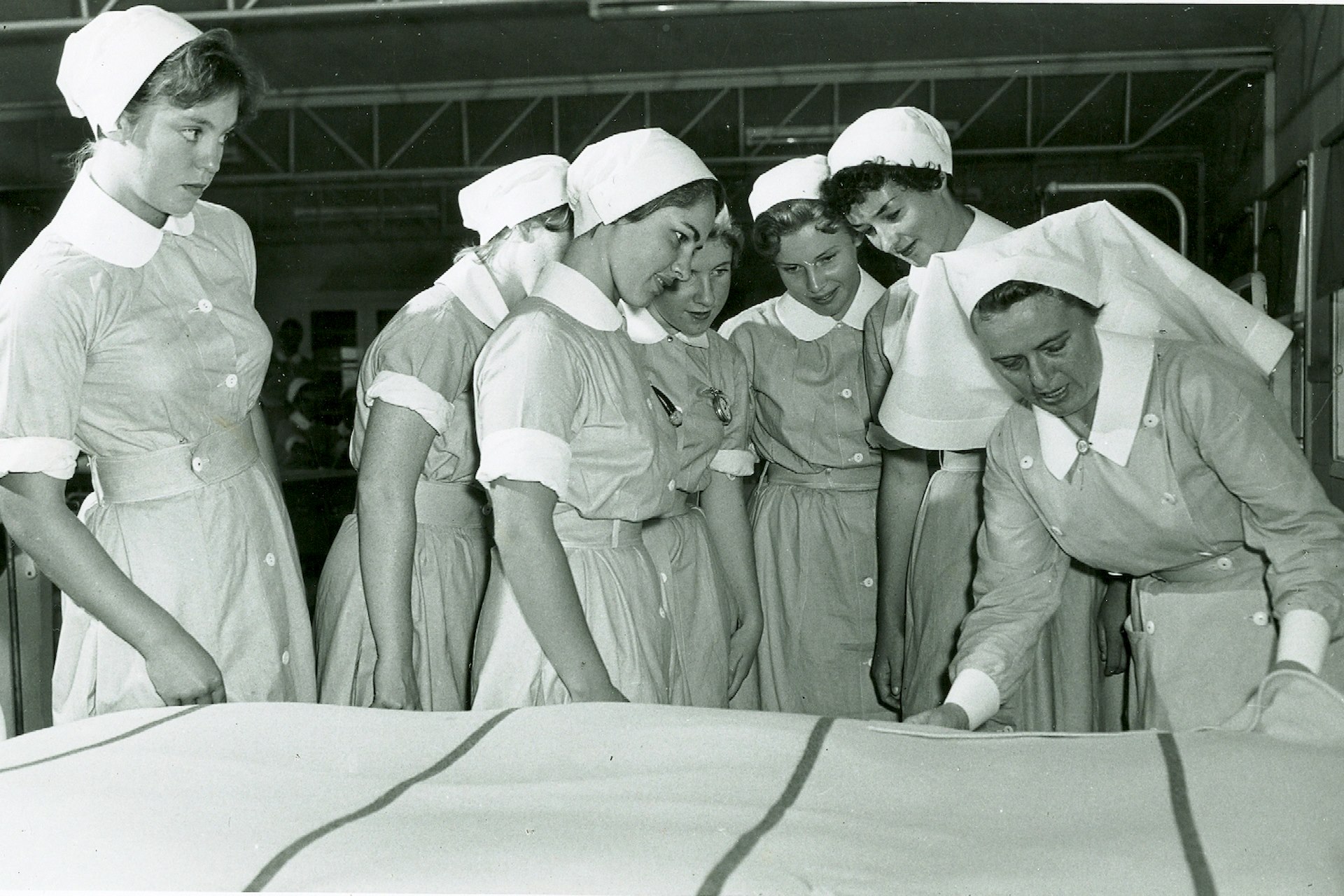
In 1958 a new tutorial department was established in the basement of the Queen Mary Nurses' Home which enabled nurses to take their lectures in a block system. Appropriate classrooms and student practice areas were provided for the first time.
Nurses were now allowed to marry in their last year of training.
The position of nurse education within RPA hospital was upgraded with a head appointed to the School of Nursing. There was an increase in the numbers of nurses undertaking postgraduate courses in Nursing Administration and Ward Management at the NSW College of Nursing.
1962 – Certificate in Research Methods established
1963 – Certificate in Orthopaedic Nursing established
1964 – Operating Theatre Techniques course established
1965 – Thoracic Nursing course established
1967 – Neurosurgical / Neurological Nursing course established
1968 – Gynaecological Nursing course established
1968 – 6-week Refresher course for Registered Nurses
1971 – Certificate in Coronary Care Nursing established
Throughout the 1960s and 70s, RPA found it difficult recruiting nurses. Many nurses were unable to commit to regular nursing because there was no provision for irregular shifts which proved problematic for women married with children.
In July 1968 a three-year training programme for nurses was established in the hope that more nurses would enter the profession. This coincided with the establishment of the Wyndham scheme which added an extra year to secondary schooling.
The first male trainees were admitted to the School of Nursing in 1969. Many groups after that had a handful of male students.
One nurse recalled,
I remember RPA was very protective of its reputation as a nurse training institution. The pass marks in the School of Nursing were usually around 70 per cent. If you failed a post exam you were out.
In 1970 the Truskett Committee reported to the Minister of Health recommending registered nurses be university rather than hospital trained. This had been the long-standing desire of some nurses and nurse educators who hoped their resulting status would be lifted. University training already occurred in the United States and Canada. It was hoped that moving the training out of hospitals would relieve pressure on the health budget. It was proposed there be a second level of nurse called the Enrolled Nurse to be trained in a hospital-based program.
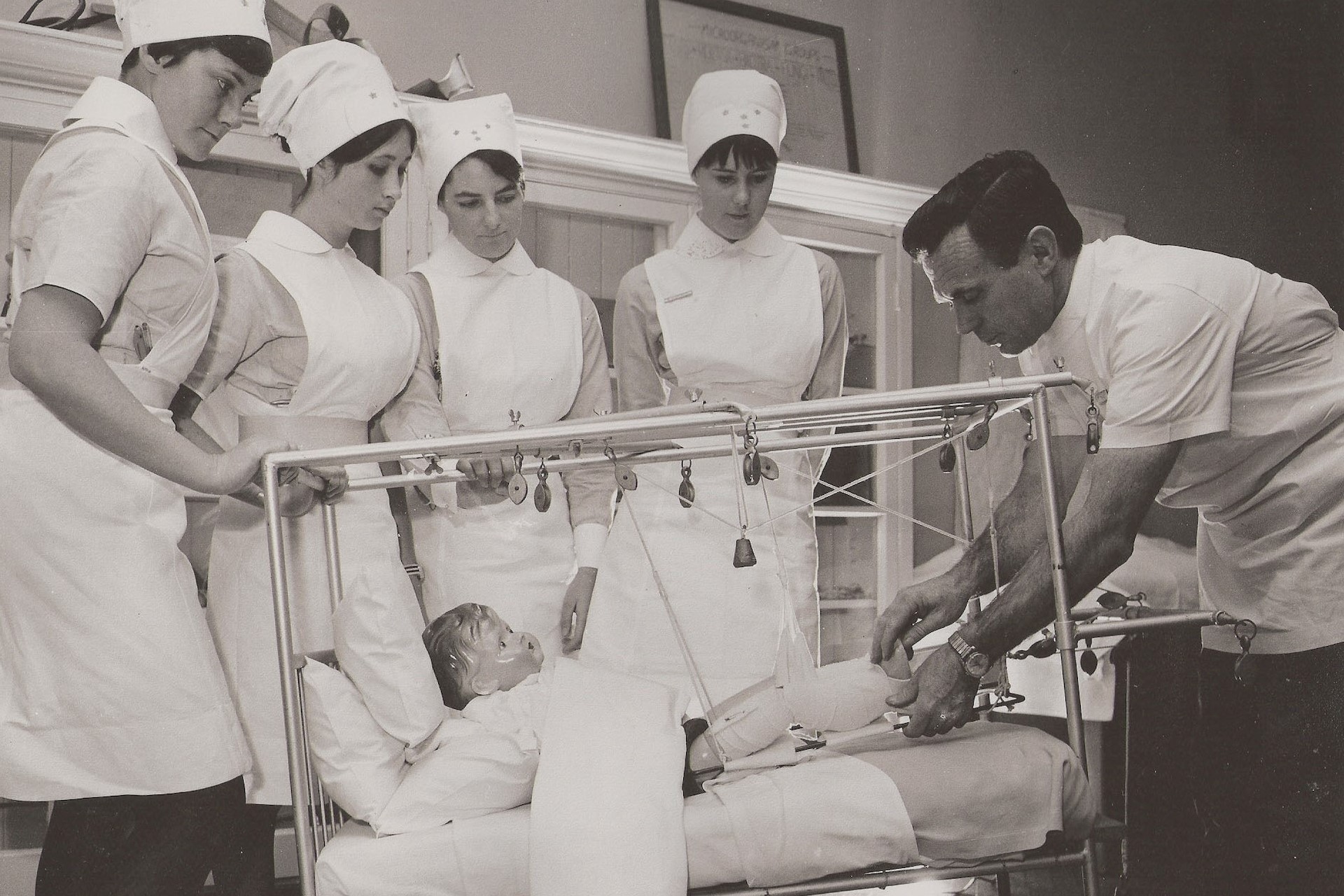
Acute shortages of nurse educators at RPA led to the School of Nursing's appeal to registered staff to become educators through the Diploma of Nurse Education. Attempts were made to recruit nurse graduates of earlier years to alleviate acute staffing shortages, with the offer of part-time work and suitable hours and a new School of Nursing was opened by Muriel Knox Doherty, RPA's first qualified Nurse Educator
In 1985 nursing education formally transitioned to universities signifying the end of hospital-based training in NSW.
Sources: 'The First Fifty Years' by Dorothy Mary Armstrong (1965); 'The Second Fifty Years' by Helen Croll Wilson (2000); The Life and Times of Royal Prince Alfred Hospital, Sydney, Australia by Muriel Knox Doherty (1996); Australasian Trained Nurses' Journal; The Sydney Morning Herald; RPA Museum collection.